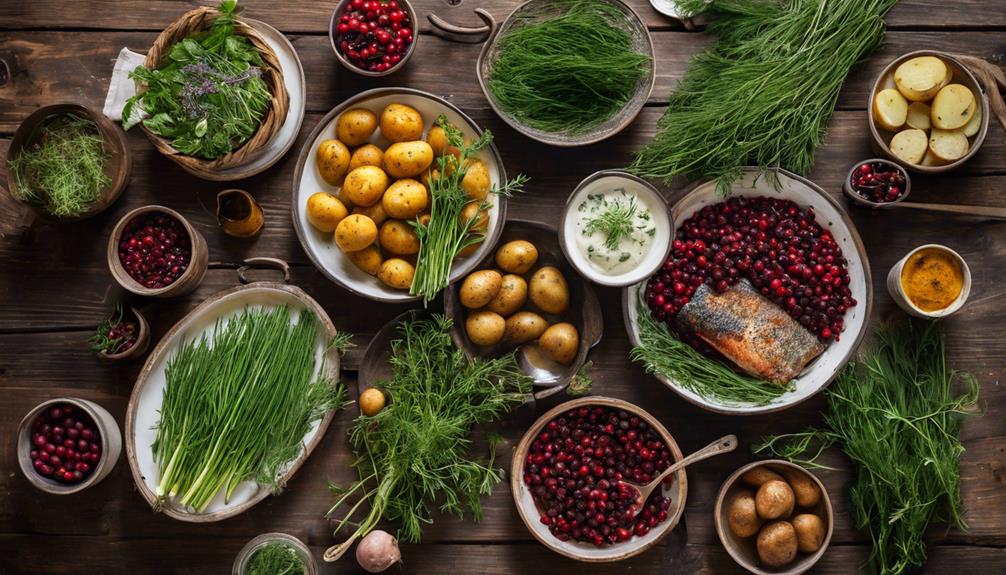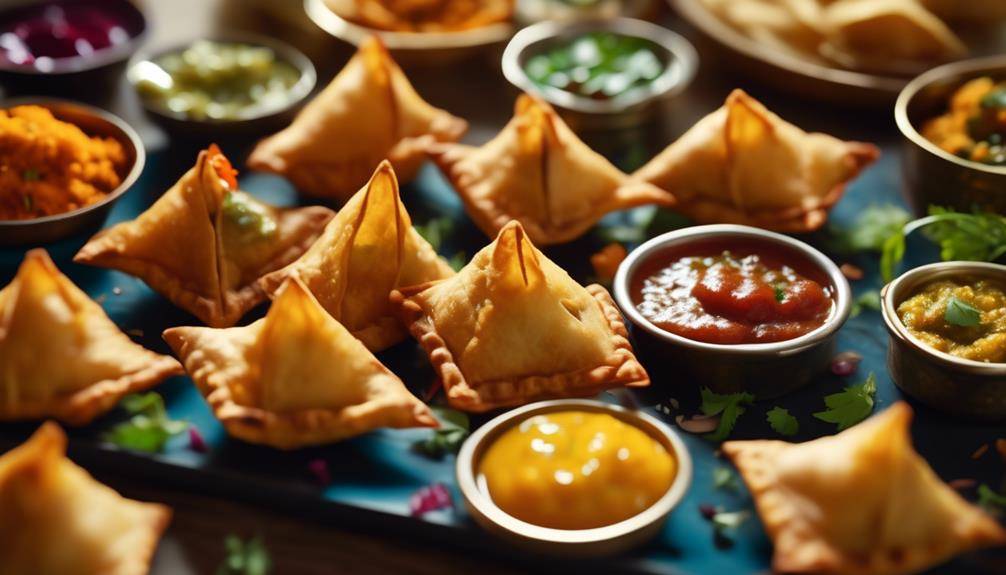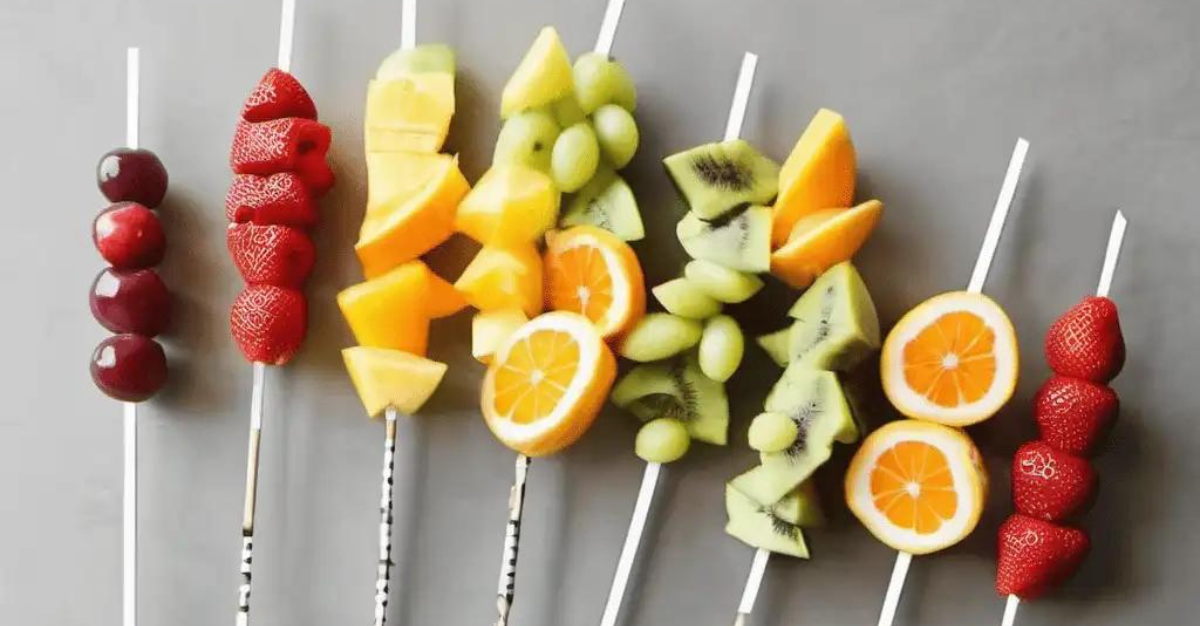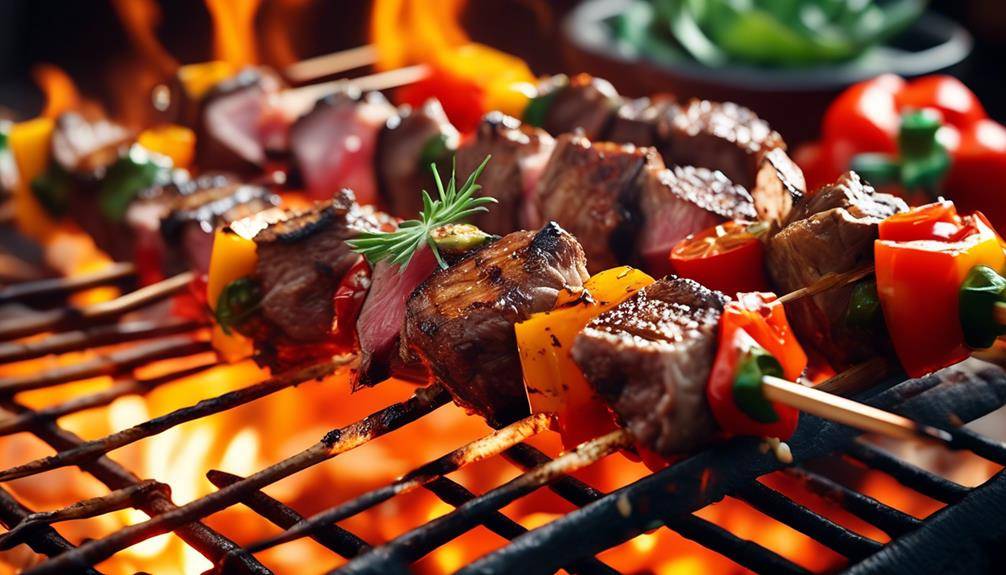Six Simple Steps to Basic Cooking Success

Basic Cooking; Are you ready to unlock the secrets of the culinary world? Look no further than ‘Six Simple Steps to Basic Cooking Success.’ This guide will take you on a journey, teaching you the art of cooking from scratch. Just like a key opens a door, these six steps will unlock your potential in the kitchen. From stocking your pantry to mastering knife skills, you’ll gain the confidence to create delicious meals. With each step, you’ll build a solid foundation of cooking knowledge. So, grab your apron and get ready to embark on a culinary adventure. Let’s dive in and discover the joy of cooking!
Master the Basics
To master the basics of cooking, you need to start by understanding the importance of following recipes carefully. Cooking is not just about throwing ingredients together and hoping for the best. It’s a science, an art, and it requires precision. By following recipes, you not only learn the techniques but also build the foundation for creating delicious and flavorful dishes.
One of the key aspects of mastering techniques is understanding the importance of measurements. Whether it’s a pinch of salt or a cup of flour, each ingredient plays a crucial role in the final outcome of your dish. By measuring accurately, you ensure that the flavors are balanced and the texture is just right.
Another important aspect is timing. Cooking is all about timing. From knowing when to add the ingredients to when to take the dish off the heat, every step has a specific time frame. By following the recipe’s instructions, you learn how to time your cooking perfectly, resulting in dishes that are cooked to perfection.
Following recipes also allows you to build flavor. Recipes are carefully crafted to ensure that the flavors complement each other. By following the instructions, you get a sense of how different ingredients work together and how they can be combined to create a harmonious taste. As you gain experience, you can start experimenting and adding your own twist to recipes, but mastering the basics is essential before you can start getting creative.
Stock Your Pantry
Are you ready to stock your pantry like a pro? Let’s talk about the essential pantry items that every home cook should have on hand. From spices and herbs to canned goods and grains, having these key ingredients readily available will ensure that you can whip up a delicious meal anytime. Plus, we’ll explore some budget-friendly pantry staples that won’t break the bank. And don’t forget the importance of organizing your pantry for easy access and efficient meal planning. Let’s get started!
Essential Pantry Items
To stock your pantry for basic cooking success, gather the essential pantry items. A well-organized pantry is key to efficient cooking. Start by categorizing your items and storing them in clear containers or labeled jars for easy access. This will help you quickly locate ingredients and avoid clutter. Now, let’s talk about pantry staple substitutions. It’s important to have versatile ingredients that can be used in multiple recipes. For example, if a recipe calls for buttermilk and you don’t have any, you can substitute it with a mixture of milk and lemon juice or vinegar.
Similarly, if you run out of baking powder, you can make a substitute by combining baking soda with cream of tartar. These pantry staple substitutions will save you from last-minute grocery store runs and ensure that you always have the necessary ingredients on hand.
Budget-Friendly Pantry Staples
Stock your pantry with budget-friendly staples to ensure you have the necessary ingredients for basic cooking success. When it comes to meal planning and budget-friendly recipes, having a well-stocked pantry is essential. Start by stocking up on dry goods such as rice, pasta, and beans. These versatile ingredients can be used as a base for many different meals.
Canned goods like tomatoes, vegetables, and broth are also great to have on hand as they can add flavor and substance to any dish. Don’t forget about spices and seasonings, which can elevate the taste of your meals without breaking the bank. By incorporating these budget-friendly pantry staples into your meal planning, you can save money while still enjoying delicious and nutritious home-cooked meals.
Organizing Your Pantry
Start by decluttering and reorganizing your pantry to ensure easy access to your stocked essentials for efficient meal preparation. A well-organized pantry not only saves you time but also helps you avoid buying items you already have. Here are some stocking tips and organizing strategies to get you started:
- Categorize your items: Group similar items together, such as grains, canned goods, spices, and snacks. This makes it easier to find what you need quickly.
- Use clear containers: Transfer items like pasta, rice, and flour into clear, airtight containers. Not only does this keep them fresh, but it also allows you to see when you’re running low.
- Label everything: Labeling your containers and shelves helps you stay organized and ensures that everything has its designated spot.
- Utilize vertical space: Install shelves or use stackable containers to maximize your pantry’s vertical space.
- Regularly check expiration dates: Make it a habit to check expiration dates and rotate items to ensure you’re using the oldest ones first.
- Maintain a shopping list: Keep a running list of pantry essentials you need to restock, so you never run out of your go-to ingredients.
Get Organized
Make sure you have all your ingredients and utensils ready before you begin cooking. Getting organized is a crucial step in achieving cooking success. To do this, start by implementing a meal planning system. This will not only save you time but also help you make healthier choices. Take some time each week to sit down and plan out your meals for the upcoming days. Consider your schedule, dietary restrictions, and preferences. Once you have your meals planned out, make a list of all the ingredients you’ll need. This way, you can ensure you have everything on hand and avoid last-minute trips to the grocery store.
In addition to meal planning, it’s important to declutter your kitchen. A cluttered space can make cooking frustrating and inefficient. Start by clearing off your countertops and organizing your cabinets. Get rid of any expired or unused ingredients, and reorganize your pantry and fridge. Group similar items together for easy access. Invest in some storage containers to help keep your ingredients fresh and organized. Having a clean and organized kitchen will not only make cooking more enjoyable but also save you time and energy.
Once you have your meal plan and a decluttered kitchen, it’s time to gather all your ingredients and utensils before you start cooking. Nothing is more frustrating than realizing you’re missing a key ingredient halfway through a recipe. Lay out all the ingredients you’ll need, chop any vegetables, and measure out any spices or seasonings. This way, you’ll have everything within reach and won’t have to scramble while your food is cooking.
Start With Simple Recipes
Choose straightforward recipes to begin your cooking journey. Starting with simple recipe ideas and beginner-friendly dishes will help build your confidence in the kitchen and set you up for success. Here are some reasons why choosing simple recipes is a great way to start:
- Less overwhelming: Simple recipes typically have fewer ingredients and fewer steps, making them less intimidating for beginners. This allows you to focus on mastering basic techniques and flavors before moving on to more complex dishes.
- Builds foundational skills: By starting with simple recipes, you can learn essential cooking techniques such as sautéing, boiling, or baking. These foundational skills will serve as a solid base for more advanced cooking in the future.
- Quick and easy: Simple recipes often require less time and effort to prepare, making them perfect for busy schedules. They allow you to enjoy the satisfaction of cooking a delicious meal without spending hours in the kitchen.
- Encourages experimentation: Once you become comfortable with simple recipes, you can start adding your own personal touches and experimenting with different flavors and ingredients. This will help you develop your own cooking style and creativity.
- Boosts confidence: Successfully preparing a simple recipe can be incredibly rewarding and boost your confidence in the kitchen. As you gain more experience and see improvement in your cooking skills, you’ll feel more motivated to take on more challenging recipes.
Starting with simple recipes is a smart approach for beginners. It allows you to learn the basics, build your skills, and gain confidence in the kitchen. So, grab a simple recipe and get cooking!
Practice Knife Skills
Now that you’ve mastered the art of starting with simple recipes, it’s time to take your cooking skills up a notch by honing your knife skills. Knife safety is of utmost importance, so make sure you familiarize yourself with the proper techniques to handle and use a knife safely. Sharpening your knife regularly will ensure precise cuts, and learning different cutting techniques will elevate your cooking game to a whole new level. So grab your chef’s knife and get ready to chop, slice, and dice like a pro!
Knife Safety Tips
Mastering knife safety is essential for practicing effective knife skills in the kitchen. To ensure your safety and prevent accidents, here are some knife safety tips to keep in mind:
- Hold the knife correctly: Grip the handle firmly with your dominant hand, while using your other hand to stabilize the food.
- Keep your fingers away from the blade: Curl your fingers inward and use your knuckles to guide the knife, keeping them clear of the sharp edge.
- Use a cutting board: Always chop on a stable surface to avoid the knife slipping and causing injury.
- Keep the knife sharp: A dull knife is more likely to slip, so regularly sharpen your knives to maintain their effectiveness.
- Store knives properly: Use a knife block or magnetic strip to store your knives safely, keeping them out of reach of children.
- Clean knives carefully: Wash knives separately from other utensils, dry them thoroughly, and store them in a safe place.
Knife Sharpening Techniques
To sharpen your knives effectively, start by using a quality knife sharpener. A dull knife can be dangerous and inefficient, so it’s important to keep your blades sharp. There are a few knife sharpening techniques you can try. One method is to use a sharpening stone, which requires a bit of practice but can provide excellent results.
Simply hold the knife at a 20-degree angle and slide it across the stone in a sweeping motion. Another option is using a honing rod, which helps maintain the sharpness of your blade. Hold the rod upright and swipe the knife down the rod, alternating sides. Remember to always follow knife safety tips, like keeping your fingers away from the blade and using a cutting board. With these techniques, you’ll be on your way to mastering the art of knife sharpening and improving your cooking skills.
Different Cutting Techniques
Improve your knife skills by practicing different cutting techniques. Mastering these techniques will not only make your cooking more efficient, but also ensure that your food is cooked evenly and looks visually appealing. Here are two sub-lists to help you visualize the different cutting techniques:
- Basic Cutting Techniques:
- Chop: This involves cutting ingredients into small, evenly-sized pieces. Start by holding the knife with a firm grip and using a rocking motion to cut through the ingredient.
- Dice: Similar to chopping, but the pieces are smaller and more uniform in size. Start by chopping the ingredient into slices, then stack the slices and cut them into small cubes.
- Advanced Cutting Techniques:
- Julienne: This technique creates long, thin strips of ingredients. Start by cutting the ingredient into thin slices, then stack the slices and cut them into matchstick-like strips.
- Mince: This involves cutting ingredients into very fine pieces. Start by finely chopping the ingredient, then use a rocking motion with the knife to further mince it.
Remember to always practice knife safety tips, such as using a sharp knife, keeping your fingers away from the blade, and using a cutting board to protect the surface. With practice and patience, you’ll become a master of different cutting techniques in no time!
Learn to Season Properly
Enhance your culinary creations by perfecting the art of seasoning. Seasoning is an essential skill that can elevate the flavor of your dishes to new heights. By using the right techniques and flavor combinations, you can transform a simple meal into a gastronomic delight.
When it comes to seasoning techniques, there are a few key principles to keep in mind. Firstly, always taste your food as you go along. This will allow you to adjust the seasoning accordingly and ensure that you achieve the perfect balance of flavors. Secondly, don’t be afraid to experiment with different herbs, spices, and condiments. They can add depth and complexity to your dishes. Finally, remember that seasoning is not just about adding salt and pepper. It’s about layering flavors and enhancing the natural taste of your ingredients.
Flavor combinations are another crucial aspect of seasoning. While salt and pepper are the foundation of most dishes, there are countless other combinations that can take your cooking to the next level. For example, the classic combination of garlic, lemon, and thyme works wonders on roasted chicken. Similarly, cumin, coriander, and paprika can give a Middle Eastern twist to grilled vegetables. The key is to experiment and find what works best for you.
Experiment With Flavors
Get ready to explore a world of flavors and unleash your creativity in the kitchen. Experimenting with flavors is one of the most exciting aspects of cooking. It allows you to create unique and delicious dishes that will wow your taste buds. So, let’s dive in and discover how you can elevate your cooking by pairing flavors and experimenting with spices.
- Pairing Flavors
- Sweet and savory: Combine the sweetness of fruits like mango or pineapple with savory ingredients like chicken or pork for a mouthwatering contrast.
- Spicy and tangy: Add a kick to your dishes by pairing spicy ingredients like chili peppers with tangy flavors like lime or vinegar. The heat and acidity will create a delicious balance.
- Experimenting with Spices
- Start small: When experimenting with spices, it’s best to start with a small amount and gradually add more until you achieve the desired flavor. This way, you can avoid overpowering your dish.
- Mix and match: Don’t be afraid to mix different spices together to create unique flavor profiles. For example, try combining cumin, coriander, and paprika for a bold and aromatic blend.
Use Cooking Techniques Effectively
Mastering cooking techniques is essential for achieving culinary success in the kitchen. Along with experimenting with flavors, another crucial aspect of cooking is using cooking techniques effectively. By understanding and utilizing various techniques, you can elevate the taste, texture, and presentation of your dishes.
One important cooking technique is proper seasoning. Effective seasoning can make or break a dish. It enhances the natural flavors of ingredients and adds depth to your cooking. Whether it’s sprinkling salt and pepper on a steak or adding herbs and spices to a stew, seasoning should be done with care and precision. Remember to taste your food as you go and adjust the seasonings accordingly to create a harmonious balance of flavors.
Another essential technique is proper heat control. Different ingredients require different cooking temperatures to achieve optimal results. For example, searing a steak on high heat creates a flavorful crust while keeping the inside tender and juicy. On the other hand, simmering a sauce on low heat allows the flavors to meld together slowly. Understanding heat control ensures that your food is cooked evenly and to perfection.
Furthermore, mastering techniques such as sautéing, braising, roasting, and grilling opens up a world of possibilities in the kitchen. Each technique imparts its unique flavors and textures to ingredients, transforming them into delicious creations. By learning these techniques and practicing them, you can expand your culinary repertoire and create a wide variety of dishes.
Don’t Be Afraid to Make Mistakes
When cooking, embrace the opportunity to learn and grow by not being afraid to make mistakes. Making cooking enjoyable and building confidence in the kitchen go hand in hand, and one of the best ways to achieve this is by adopting a fearless attitude towards culinary mishaps. Here are a few reasons why you should embrace your cooking mistakes:
- Learning from Experience: Making mistakes allows you to learn from your own experiences. Whether it’s overcooking a dish or adding too much salt, each mistake is an opportunity to understand what went wrong and how to avoid it in the future. Embrace these mistakes as valuable lessons that will make you a better cook.
- *Imagine:* You’re making a pasta dish and accidentally burn the garlic. Instead of getting frustrated, take a moment to reflect on what caused the burnt garlic. Was the heat too high? Did you leave it unattended? By understanding the mistake, you can adjust your cooking techniques and prevent it from happening again.
- Creativity and Innovation: Mistakes can lead to unexpected discoveries and spur creativity in the kitchen. Some of the most famous culinary inventions were born out of mistakes. Don’t be afraid to experiment and think outside the box. Who knows, your culinary mishap might just turn into a delicious new recipe or technique.
- *Imagine:* You’re making a cake and realize you forgot to add baking powder. Instead of scrapping the batter, you decide to bake it anyway. Surprisingly, the result is a dense and fudgy cake that everyone loves. This mistake sparks your creativity and inspires you to explore new ways of baking.
Basic Cooking; Frequently Asked Questions
What Are Some Common Cooking Mistakes Beginners Should Avoid?
Common cooking mistakes can easily be avoided with a little know-how. Learn how to prevent these errors and become a better cook. Follow these six simple steps to basic cooking success.
How Can I Effectively Meal Plan and Organize My Grocery Shopping?
To effectively meal plan and organize your grocery shopping, start by creating a weekly menu. Make a detailed shopping list based on your planned meals, and don’t forget to check your pantry for any ingredients you already have.
What Are Some Essential Kitchen Tools and Utensils Every Beginner Cook Should Have?
To become a successful beginner cook, you need essential kitchen tools and utensils. These items will make your cooking experience easier and more efficient. Let’s explore the must-haves for every aspiring chef.
How Can I Determine the Proper Cooking Time and Temperature for Different Types of Meat?
To determine the proper cooking time and temperature for different types of meat, start by consulting a reliable recipe or cooking guide. Use a meat thermometer to ensure the internal temperature reaches the recommended level for safe and delicious results.
How Do I Know When a Dish Is Properly Seasoned and How Can I Adjust the Flavors if Needed?
To know when a dish is properly seasoned, taste it! Adjust the flavors by adding more salt or spices if needed. Seasoning techniques include layering flavors, tasting as you go, and using herbs and spices to enhance the dish.
Conclusion
In conclusion, mastering the basics of cooking is the key to success in the kitchen. By stocking your pantry, getting organized, and starting with simple recipes, you can build a strong foundation for your culinary adventures. Practice your knife skills, learn to season properly, and don’t be afraid to experiment with flavors. With effective cooking techniques and a willingness to learn from your mistakes, you’ll be well on your way to becoming a skilled and confident cook. So, grab your apron and get cooking!








